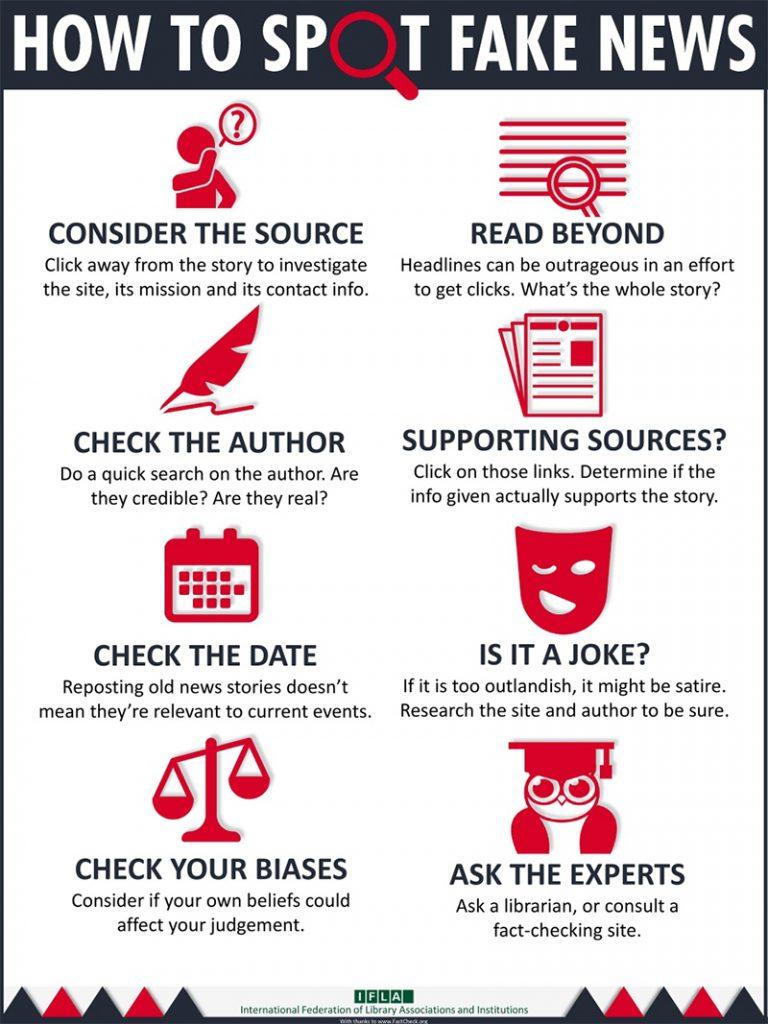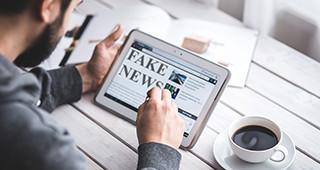It has always been true that the passing of information can go wrong, like the game “telephone,” in which a piece of information distorts the more times it passes from one person to the next. But sometimes information is false to begin with, or is purposely distorted to mislead an audience. Rising social and political upheaval make the importance of finding accurate news information with thorough, and timely information more vital than ever – in some cases, it can be literally life or death.
Since the rise of social media and the ease with which messages, photos, and videos can spread, it is more crucial than ever to develop skills for finding accurate information as well as spotting inaccurate information. There are some simple tools available to help you give what you see and hear an accuracy check. These skills are for all information consuming people from kids to adults. You can begin honing your information skills in three easy steps.
3 Steps to Improve Information Literacy Skills
1. Learn the Vocabulary
News stories and social media posts can fall in different places on a scale from “true but misleading” to” completely false.” Inaccuracies can be honest mistakes or deliberate attempts to spread false information. It is good to know the words that describe these differences. Knowing them helps us name the problem we see when we read something that doesn’t quite add up.
Some news stories are purposely written to mislead:
- fake news: news stories that are untrue and never happened
- disinformation: false information that is purposely made up and spread to hide the truth or spread a lie to make it seem like the truth
- ommission: purposely misleading by leaving out important details
Some news stories mistakenly report false information:
- misinformation: inaccurate information that is mistakenly reported and spread due to an error or mistake; there was no intention to mislead the audience
- correction or retraction: when a news source admits an error and publishes an admission of that error, or a correction, if they have learned more accurate information
This video from Cyberwise.org’s Fake News Learning Hub is a great introduction to the concept of fake news.
2. Learn How to Spot Bad Information
Now that you know the different types of information mis-steps from honest mistakes to deceptions, now it’s time to learn how to tell the difference as you read and hear news stories. This infographic from the International Federation of Library Associations and Institutions (IFLA) is a great checklist of 8 things to consider when deciding if a piece of information is reliable.

You can use this checklist to analyze a news story, facebook post, or youtube video yourself. Another way to verify a news story is to enter a search in one of these sites that specialize in tracking down source information to identify fake news, misinformation, and bias for information consumers. Each one specializes in certain types of information or information channels.
- snopes.com A reference source for researching urban legends, folklore, myths, rumors, and misinformation.
- politifact.org A website that specializes in fact-checking journalism.
- truthorfiction.com Get information about eRumors, fake news, disinformation, warnings, offers, requests for help, myths, hoaxes, virus warnings, and humorous or inspirational stories circulated by email.
3. Learn About Your Own Go-to News Sources
Another very helpful resource is the Interactive Media Bias Chart. You can look up most major newspapers, magazines, or television news channels and see how each rate for both bias and accuracy. You can also look up particular stories to see how individual stories rate.
The chart also helps you see how these news channels compare to each other. Really good advice is to get your news from a variety of sources. In order to get a well rounded understanding from more than one point of view, a good rule of thumb is to pick news sources that don’t sit right next to each other on the chart.
Finding Accurate Information – Dig a Little Deeper
The articles listed below are from libraries, universities, and other organizations who have published in-depth discussions about the challenges associated with being an informed listener and reader.
- Center for Media Literacy (CML) works to help people develop critical thinking for the 21st century media culture. Their goal is to empower wise information choices.
- Media Literacy Now An organization that wants to ensure all K-12 students receive media literacy education and skills.
- National Association for Media Literacy Education (NAMLE) A non-profit organization dedicated to advancing media literacy education.
- The News Literacy Project (NLP) Provides programs and resources for educators and the public to teach, learn and share the abilities needed to be smart, active consumers of news and information and equal and engaged participants in a democracy.
- The Poynter Institute Promotes honest information in the marketplace of ideas.
To level up your skills finding accurate news sources even more, read one of these more comprehensive guides and handbooks:
International Center for Journalists: A Short Guide to the History of ‘Fake News’ and Disinformation. (Also Available in Spanish or Czech.)
UNESCO (United Nations Educational, Scientific and Cultural Organization): Journalism, ‘Fake News’ and Disinformation: A Handbook for Journalism Education and Training (This handbooks is available in English full color or print friendly, Spanish, French, Arabic, and many more. Just scroll down on the page to see the full list of languages.)
